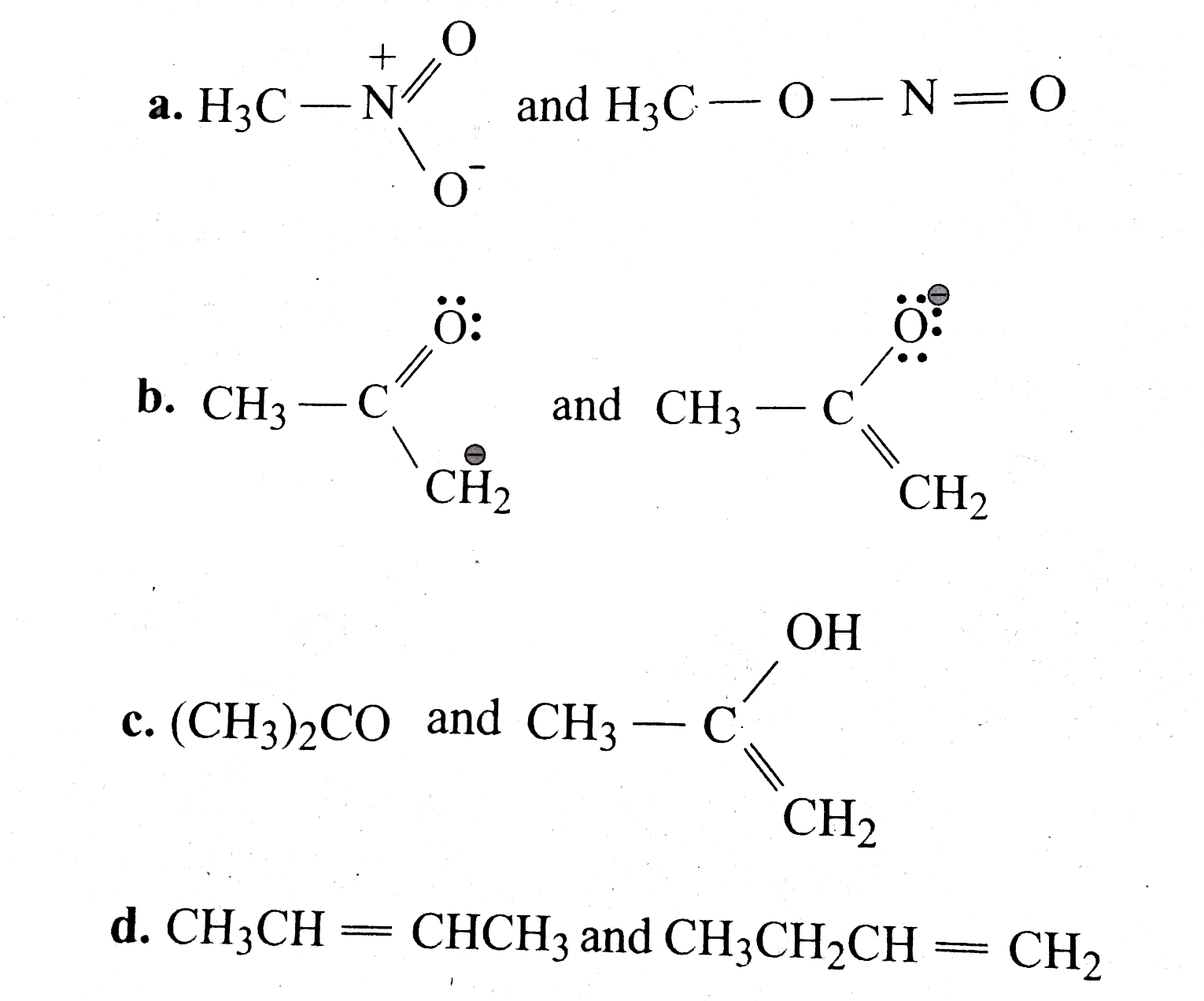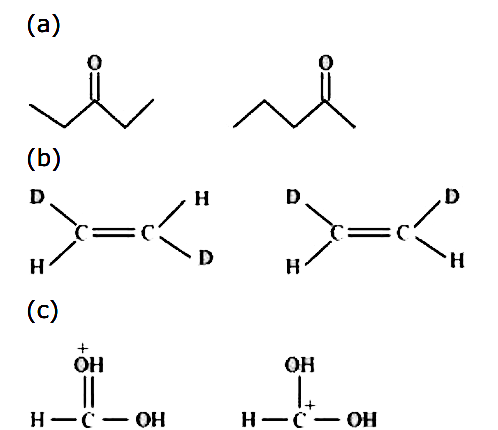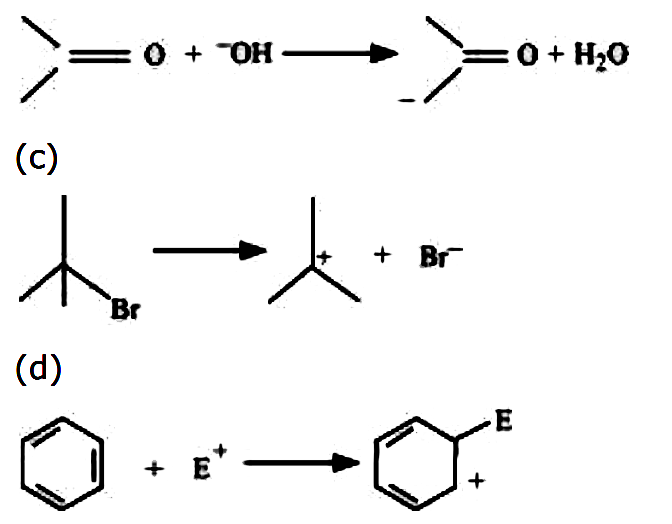Complete Solutions to Concept of chapter GENERAL ORGANIC CHEMISTRY of Class 11 book with complete answers and questions
| Class 11 | CHEMISTRY |
| Chapter | GENERAL ORGANIC CHEMISTRY |
| CENGAGE CHEMISTRY | Concept |
| Number Of Questions | 17 |
| Academic Year | 2023-24 |
Using curved-arrow notation, show the formation of reactive intermediates when the following covalent bonds undergo heterolytic cleavage.
(a) `CH_(3)–SCH_(3)`, (b) `CH_(3)–CN`, (c) `CH_(3)–Cu`
View SolutionGiving justification, categorise the following molecules/ions as nucleophile or electrophile:
`HS^(-),BF_(3),C_(2)H_(5)O^(-),(CH_(3))_(3)N,`
`Coverset(+)l,CH_(3)-overset(+)C=O,H_(2)N^(-),, overset(+)NO_(2)`
View SolutionIdentify electrophilic centre in the following: `CH_(3)CH=O, CH_(3)CN, CH_(3)I.`
View SolutionWhich bond is more polar in the following pairs of molecules: (a) `H_(3)C-H, H_(3)C-Br` (b) `H_(3)C-NH_(2), H_(3)C-OH` (c) `H_(3)C-OH, H_(3)C-SH`
View SolutionIn which C–C bond of `CH_(3)CH_(2)CH_(2)Br` , the inductive effect is expected to be the least?
View SolutionWrite resonance structures of `CH_(2)=CH–CHO` . Indicate relative stability of the contributing structures.
View SolutionExplain why the following two structures, I and II cannot be the major contributors to the real structure of `CH_(3)COOCH_(3)`

View SolutionExplain why `(CH_(3))_(3)overset(+)C`is more stable than `CH_(3)overset(+)CH_(2)` and `CH_(3)` is the least stable cation
View SolutionDraw the complete structures of bromomethane
View SolutionWhich of the following pairs of structures do not constitude resonance structures ?

View SolutionWhich is expected to be more stable,
(I) `O_2NCH_2CH_2O^-` or
(II) `CH_3CH_2O^-` any why ?
View SolutionDraw the resonance structures for the following compounds. Show the electron shift using curved-arrow notation.
`C_6 H_5 -CHO`
View SolutionExplain why alkyl groups act as electron donors when attached to a n system
View SolutionClassify the reagents shown in bonds in the following equations as nucleophilies or electrophiles. Use curved-arrow notation to show the electron movement.
(a) `CH_3COOH + HO^(Ө) rarr CH_3COO^(Ө) + H_2 O`
(b) `CH_3COCH_3 + NC^(Ө) rarr CH_3C(CN) OHCH_3`
View SolutionClassify the following reactions in one of the reaction type studied in this unit.
`CH_3CH_2 Br + HS^(-) to CH_3 CH_2 SH`
View SolutionWhat is the relationship between the members of following pairs of structures ? Are they structural or geometrical isomers or resonance contributors ?

View SolutionFor the following bond cleavages, use curved-arrows to show the electron flow and classify each as homolysis or heterolysis. Identify reactive intermediate produced as free radical, carbocation and carbanion.


View Solution
Concept questions and complete solutions for chapter GENERAL ORGANIC CHEMISTRY of CENGAGE CHEMISTRY (ENGLISH) of Class 11